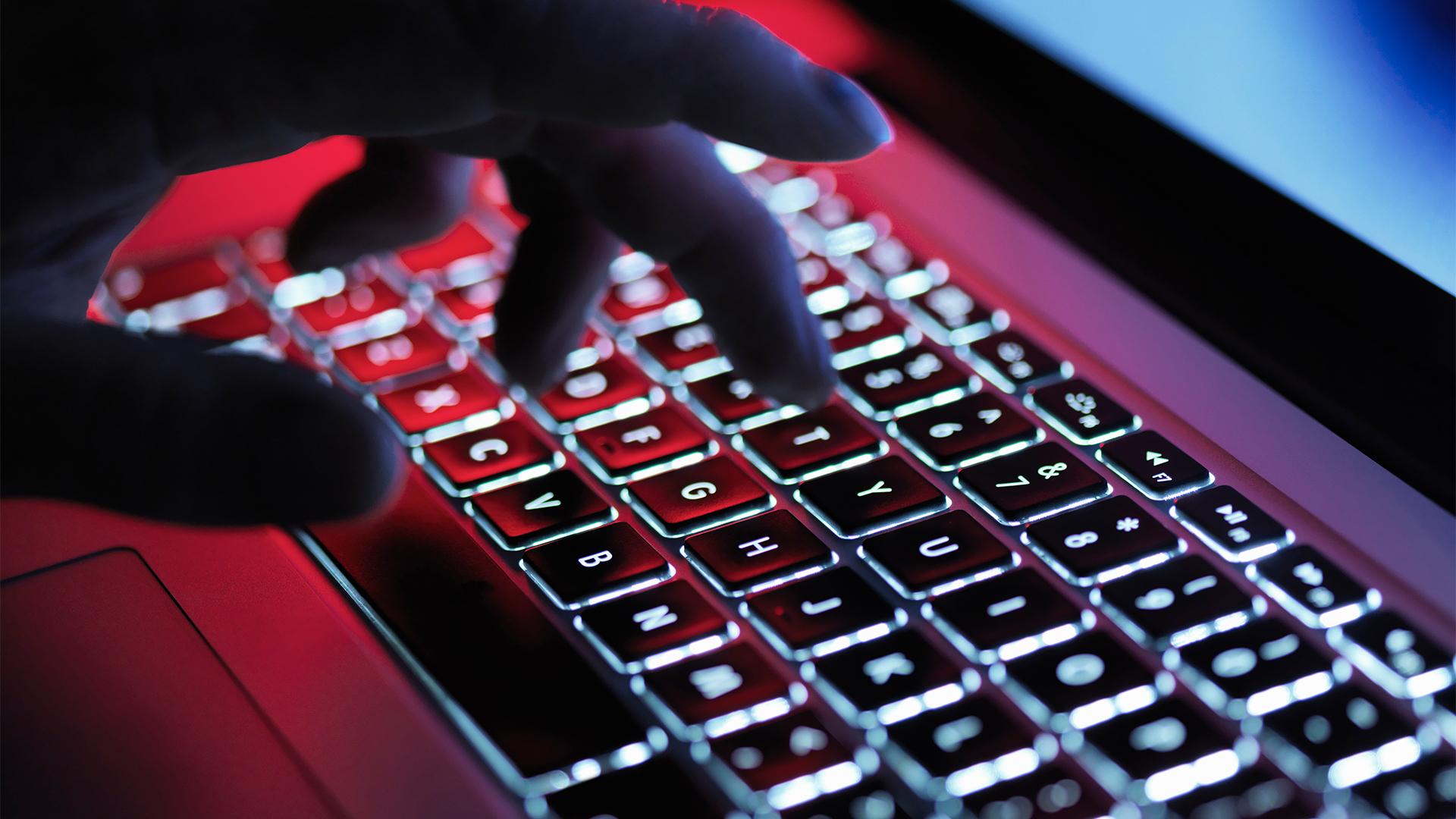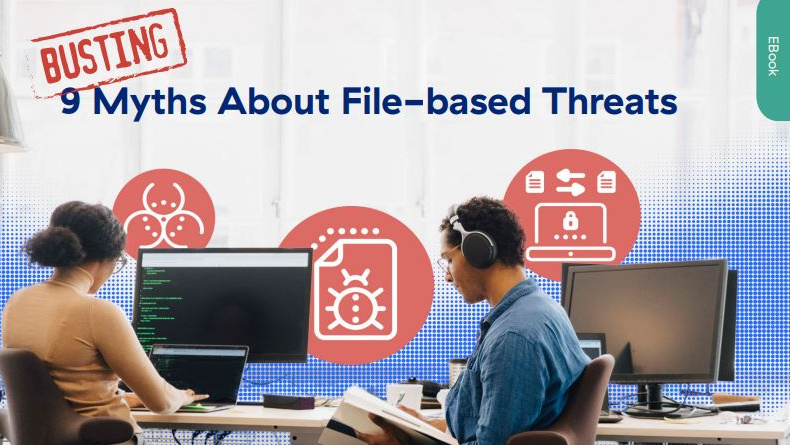The perils of remote working
Now that more employees than ever will be working remotely, here are some of the most prominent security threats and how hardware-enforced security features can help combat them

Remote workers enjoy few of the security benefits of office workers. The home environment offers one level of threat, but when remote workers are outside the home, the level goes up considerably. Now that a high percentage of employees are likely to remain remote workers post pandemic, or at least follow a more flexible work pattern, it is essential to keep these employees as secure as those that return to the office. Here are some of the dangers they will encounter, and how they can be mitigated.
The first thing to consider is that the focus of security changes whether the worker is at home or in a public space. Whereas an office worker could be protected using primarily network-based security provisions, the remote worker does not have that protective layer. The lack of a firewall means that they will be even more reliant on the built-in security and security applications of the computer or printer they are using. The goal is therefore to keep the main work system, most likely a laptop, as secure as possible. Research by YouGov has shown that 91% of IT decision makers believe endpoint security is now at least as important as network security.
The most obvious danger for a remote worker outside the home is when their laptop is physically stolen. This will not only interfere with their ability to carry on working, but risks the data held on the device being compromised, and that device could even be used to gain access to other corporate systems. Aside from being careful with their laptop, employees can be protected by having a more secure system, starting with biometrics. Windows Hello biometric sign-in, enabled on HP devices equipped with HP Wolf Security, is a great place to start.
While this can protect them from unlocking the device, there are still opportunities for thieves to get data inside by dismantling it. HP TamperLock provides a general protection mechanism against all classes of physical attacks that involve removal of the system cover, via a cover removal sensor that detects and locks down a system that is disassembled. This is also where the remote management capabilities of HP Wolf Security could be used to take control of the device when it is turned on. And if the laptop’s hard drive has been encrypted, which HP devices support, you can’t access any data – even if a drive is removed from its host system.
There are further dangers from employees using work-provided laptops in a variety of locations and scenarios. Spoofed public Wi-Fi can catch people off guard, for example. This is where a rogue access point is created in a public Wi-Fi spot with the same SSID as the legitimate one, fooling the user into connecting to the wrong network. Employees may also use their laptops for non-work-related activities. YouGov research has shown that 55% of employees opened personal email attachments or web pages on their work systems, 27% played games, and 36% watched online streaming video services. All these activities have been targets for attack during the pandemic. It would be unreasonable and probably impossible to prevent employees from engaging in all these things on work systems. Instead, the device itself should help prevent them.
This is where the many-layered approach of HP Wolf Security comes in. Enabled systems incorporate the HP Endpoint Security Controller, which manages a host of features that make a remote worker’s laptop more resilient and able to contain these threats. This begins with HP Sure Start, which protects against malicious code that tries to operate beneath the level of the operating system to infect the computer’s firmware. As the BIOS is loaded, it is checked for compromises and, if any are found, a clean BIOS version is loaded instead. Next comes HP Sure Run, which stops malware from shutting down critical processes.
So much of our work is now performed online via websites. Clever cyber-criminals can take advantage of this by either infecting an existing website or cloning it with a different URL. This is where HP Sure Click Enterprise can provide protection. Files, applications, and web pages are opened inside micro virtual machine containers. If any of these try to launch malware, it will be isolated to this container, which keeps the employee’s computer and data secure. Meanwhile, the malware can be analyzed within the container to strengthen resiliency.
Another issue with cyberthreats is that they are continuously evolving. The traditional method of looking for the signatures of known malicious code will by its very nature always be behind this curve. To combat this, HP Sure Sense employs deep learning and AI to recognize new threats as they emerge in real time, allowing preventative measures to be taken proactively.
Not all threats are technological, either. Employees working remotely in a café, train or other public space can fall foul of “shoulder surfers” peeking at their laptop screen, a process also known as “visual hacking”. This can be mitigated with a laptop screen that has a narrow angle of view. HP Sure View provides the perfect solution. The most recent generation of HP Sure View (HP Sure View Reflect) enables less than 1.5% of a user’s screen to be visible at a 45-degree angle. But all generations of HP Sure View seriously reduce viewing from any angle, and the protection can be toggled at the push of a button so you only have it when you need it.
Of course, there is always the possibility that an employee’s device gets damaged accidentally. Spilling coffee on your laptop is an occupational hazard of working in cafes, for example. HP Sure Recover empowers an employee to restore their entire operating system with just a network connection available, without the need for advanced IT skills.
Although remote workers can be more susceptible to security perils, the right focus on the built-in security of the employee’s laptop endpoint can ensure they remain safe. Even if the environment is as insecure as a public Wi-Fi network in a café, deploying HP Wolf Security-enabled devices repels cyberthreats at every level, so remote work can be both secure and productive.
From the maker of the world’s most secure PCs* and Printers**, HP Wolf Security is a new breed*** of endpoint security. HP’s portfolio of hardware-enforced security and endpoint-focused security services are designed to help organizations safeguard PCs, printers, and people from circling cyber predators. HP Wolf Security provides comprehensive endpoint protection and resiliency that starts at the hardware level and extends across software and services. For more information, visit www.hp.com/wolf
*Based on HP’s unique and comprehensive security capabilities at no additional cost among vendors on HP Elite PCs with Windows and 8th Gen and higher Intel® processors or AMD Ryzen™ 4000 processors and higher; HP ProDesk 600 G6 with Intel® 10th Gen and higher processors; and HP ProBook 600 with AMD Ryzen™ 4000 or Intel® 11th Gen processors and higher.
**HP’s most advanced embedded security features are available on HP Enterprise and HP Managed devices with HP FutureSmart firmware 4.5 or above. Claim based on HP review of 2021 published features of competitive in-class printers. Only HP offers a combination of security features to automatically detect, stop, and recover from attacks with a self-healing reboot, in alignment with NIST SP 800-193 guidelines for device cyber resiliency. For a list of compatible products, visit: hp.com/go/PrintersThatProtect. For more information, visit: hp.com/go/PrinterSecurityClaims.
***HP Security is now HP Wolf Security. Security features vary by platform, please see product data sheet for details.
Sign up today and you will receive a free copy of our Future Focus 2025 report - the leading guidance on AI, cybersecurity and other IT challenges as per 700+ senior executives
ITPro is a global business technology website providing the latest news, analysis, and business insight for IT decision-makers. Whether it's cyber security, cloud computing, IT infrastructure, or business strategy, we aim to equip leaders with the data they need to make informed IT investments.
For regular updates delivered to your inbox and social feeds, be sure to sign up to our daily newsletter and follow on us LinkedIn and Twitter.
-
 Blackpoint Cyber and NinjaOne partner to bolster MSP cybersecurity
Blackpoint Cyber and NinjaOne partner to bolster MSP cybersecurityNews The collaboration combines Blackpoint Cyber’s MDR expertise with NinjaOne’s automated endpoint management platform
-
 Forget MFA fatigue, attackers are exploiting ‘click tolerance’ to trick users into infecting themselves with malware
Forget MFA fatigue, attackers are exploiting ‘click tolerance’ to trick users into infecting themselves with malwareNews Threat actors are exploiting users’ familiarity with verification tests to trick them into loading malware onto their systems, new research has warned.
-
 Amazon confirms employee data compromised amid 2023 MOVEit breach claims – but the hacker behind the leak says a host of other big tech names are also implicated
Amazon confirms employee data compromised amid 2023 MOVEit breach claims – but the hacker behind the leak says a host of other big tech names are also implicatedNews Millions of records stolen during the 2023 MOVEit data breach have been leaked
-
 Nearly 70 software vendors sign up to CISA’s cyber resilience program
Nearly 70 software vendors sign up to CISA’s cyber resilience programNews Major software manufacturers pledge to a voluntary framework aimed at boosting cyber resilience of customers across the US
-
 Busting nine myths about file-based threats
Busting nine myths about file-based threatsWhitepaper Distinguish the difference between fact and fiction when it comes to preventing file-based threats
-
 The Total Economic Impact™ of the Intel vPro® Platform as an endpoint standard
The Total Economic Impact™ of the Intel vPro® Platform as an endpoint standardWhitepaper Cost savings and business benefits enabled by the Intel vPro® Platform as an endpotnt standard
-
 The Total Economic Impact™ of IBM Security MaaS360 with Watson
The Total Economic Impact™ of IBM Security MaaS360 with WatsonWhitepaper Cost savings and business benefits enabled by MaaS360
-
 WithSecure Elements EPP and EDR review: Endpoint protection on a plate
WithSecure Elements EPP and EDR review: Endpoint protection on a plateReviews An affordable cloud-managed solution with smart automated remediation services



